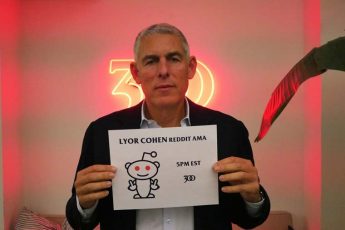
Most musicians these days know about music distributors and their function in getting music online. What many might not know is there are music video distributors that provide the same function for video content. Small time artists typically don’t put out a lot of music videos because of its perceived cost and time commitment. While there is certainly some monetary cost and time associated with creating music videos, it can be an incredibly worthwhile thing to fold into the creative process.
Keep in mind that music videos don’t all take one form. Animated, abstract, and landscape videos are creative and compelling ways that artists can produce videos to promote their work. Additionally, using music video distribution is easy for artists to get the hang of. Let’s take a closer look at the process and why music video distribution is a wise thing for artists to subscribe to.
Saves Time For Artists
For starters, music video distribution saves an artist’s time. Even if it were possible to manually upload videos to every platform that hosts video content, it would take far too long to upload a high-quality video to individual websites. Using music video distribution saves time by allowing you to upload your content once and have it delivered to all the major streaming platforms.
Gets Music Videos Onto Exclusive Platforms
Platforms like YouTube are user-operated, meaning users can upload and view content on their own without the need for a third party distributor. However, many platforms where music listeners and fans go to discover new music and listen to their favorites do require third party distributors to deliver the content. Spotify, Vevo, Apple Music, and Tidal all require artists to use music video distributors to deliver their content and have it viewable on these platforms. Artists will also get the benefit of accessing a verified artist account for each of these platforms. Verified accounts mean that the artist has claimed ownership and control of their account, so you know they’re the ones running it.
Simple Steps
Using music video distribution services is fairly simple, and even those with no experience using distributors can easily get the hang of it by following the below steps:
1. Create Video
The first step in the process is to select a song to make a video for and begin conceptualizing and filming your video. Smartphone cameras are advanced enough nowadays that a lot of great footage can be captured with easily accessible tools. However, it’s always wise to consider whether you can get your hands on a nice digital camera for the day to get some high quality shots. If working with cameras isn’t your thing, consider bringing on some trusted collaborators to help you shoot and edit your video.
2. Upload Once
Once the video is complete, it’s time to bring it to your distributor. Make sure you have an account set up with them, and you’re ready to get started. The distribution service will likely have you input information about your artist name, track name, and video quality. From there, you’ll have the option to set a release date and choose which platforms you want to upload your content to. Most services will allow you to upload as many videos as you wish during a year with a few added charges for additional artists or bands.
3. Check Stats
Before the video goes live, you should ensure you have a marketing strategy in place to help promote its release and get some buzz going around your video. From there, you can sit back and check your streaming stats as they come in! Keep in mind that your first few releases may not create as much streaming revenue as you might like, but that’s why artists need to stick with it and keep creating content. The longer and harder you work at getting your music seen and heard, the more results you’ll see overall.
Conclusion
Music video distribution is an essential piece to the success of any artist’s career; this is especially true for independent artists who lack a label’s representation. Music streams and video streams not only generate royalties, but they also add to the legitimacy of a band’s image. The larger fan base a band has, the more opportunities they’ll be able to generate and take advantage of in the long run.
The process is fairly simple and only requires artists to subscribe to a distribution service before they can start uploading and publishing content on streaming platforms. It’s important to note that a video’s success depends on how it’s marketed, advertised, and what kind of fan base the band or artist currently has. Videos can be great for both monetization and creating a wider audience to draw on.



